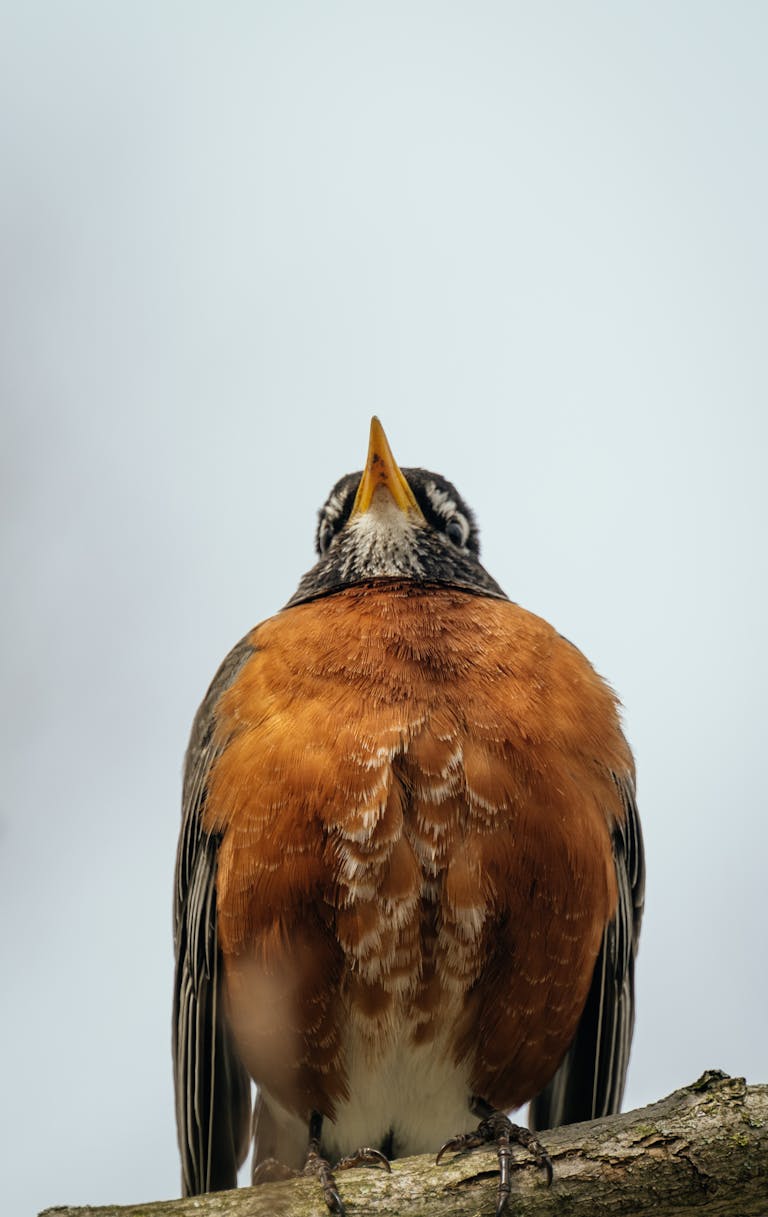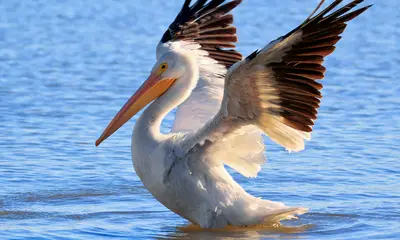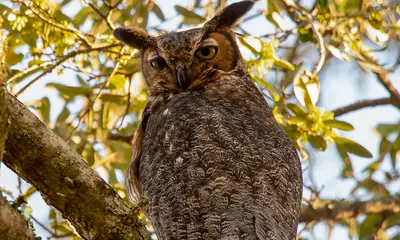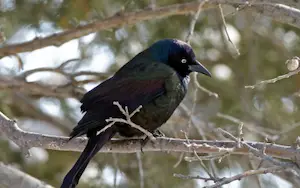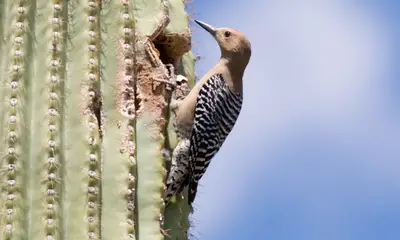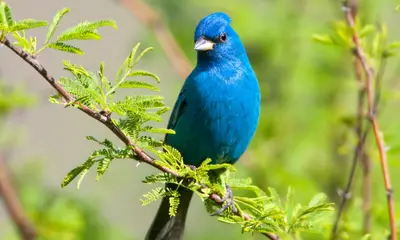19 Types Of PARROTS In Florida (ID Guide With Photos)
Did you recently come across a parrot in Florida, and want to know what species it was?
Identifying parrots in the Sunshine State is not as easy as it might seem, since there are many species of parrots that regularly breed in Florida.
To help you identify the bird you saw, we’ll cover the most common parrots of Florida in this article.
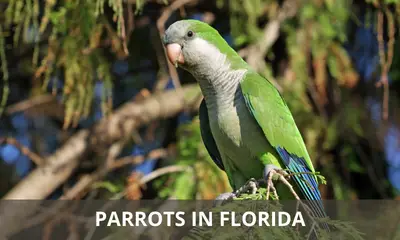
What are the types of parrots in Florida?
The 19 types of parrots commonly found in Florida are:
- Monk Parakeet
- Nanday Parakeet
- Rose-Ringed Parakeet
- Budgerigar
- Red-masked Parakeet
- Blue-crowned Parakeet
- White-winged Parakeet
- Mitred Parakeet
- White-eyed Parakeet
- Green Parakeet
- Crimson-fronted Parakeet
- Scarlet-fronted Parakeet
- Yellow-chevroned Parakeet
- Red-crowned Parrot
- Orange-winged Amazon
- Red-lored Parrot
- Yellow-headed Parrot
- Blue-and-yellow Macaw
- Chestnut-fronted Macaw
All of the feral populations of parrots living in Florida are descended from birds that were accidentally introduced by humans.
Some of these species have become established as breeding birds in Florida, and can be regularly observed in some urban areas.
Now let’s dive into the details, and take a closer look at each of these species in order to get the full scoop:
Monk Parakeet
Scientific name: Myiopsitta monachus
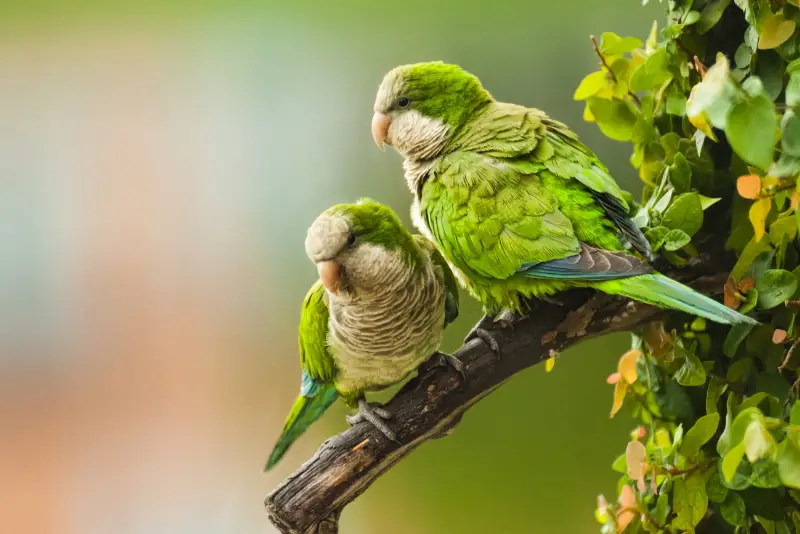
Monk Parakeets are the most common parrots found in Florida, and are present in great numbers in some urban areas.
Some estimates put their population north of 100,000 individuals in the sunshine state.
Monk Parakeets are also known as Quaker Parrots, and look like miniature macaws with long tails
They have bright blue heads and backs, and white underparts. These birds are very social animals, living in groups called flocks.
These birds feed on fruits, berries, buds, flowers, and seeds. During the breeding season, males will compete for mates by making high-pitched whistling sounds.
While these psittacids are regarded as an agricultural pest in their native range in Argentina and other South American countries, they are largely a welcome sight in Florida.
Nanday Parakeet
Scientific name: Aratinga nenday
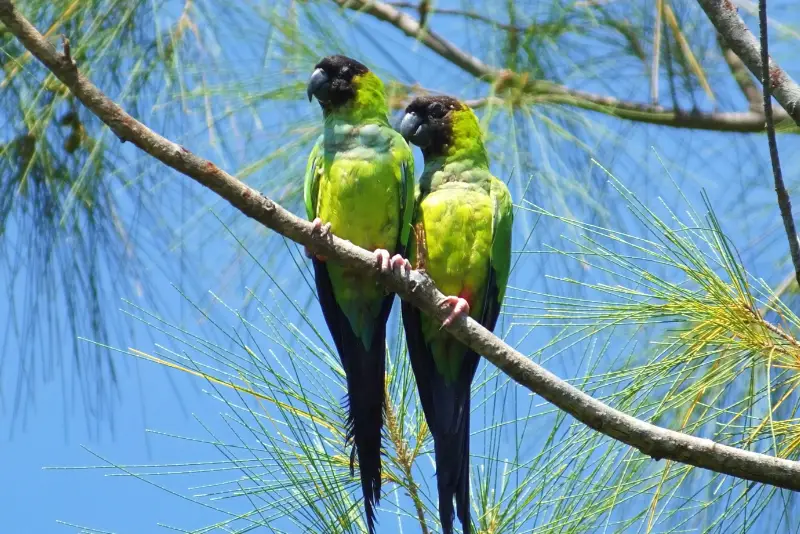
This parrot lives in several areas in South Florida. Nanday means “beautiful” in Hindi, and it certainly looks beautiful! This green Florida bird has a yellow head and orange feet.
Its tail feathers have red tips. Male birds can weigh up to 1 pound (0.5 kg), while females weigh less than half as much.
The diet of these birds consists mainly of fruit, seeds, nuts, and insects, and they make loud and distinctive calls at dawn and dusk.
In the Sunshine State, the Nanday Parakeet is most commonly found in Palm Beach, Miami, Tampa Bay, and St. Petersburg.
Rose-Ringed Parakeet
Scientific name: Psittacula krameri
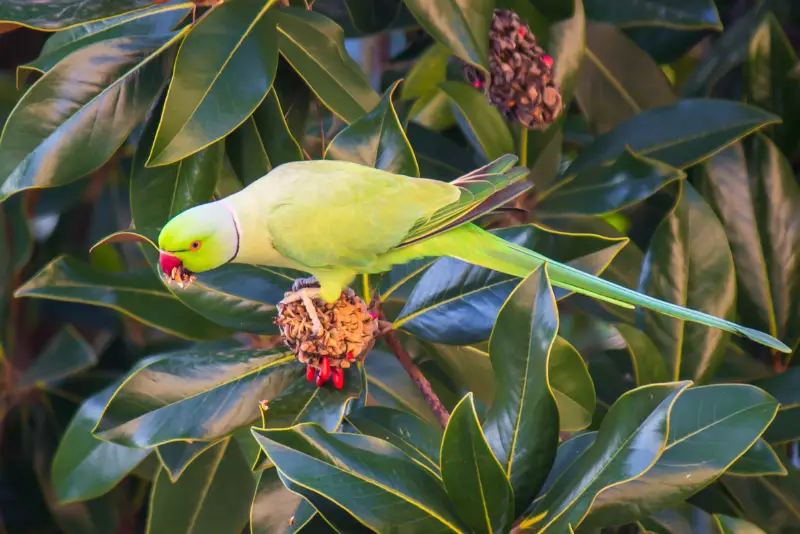
The Rose-ringed Parakeet can be found in wild flocks around Florida. These birds are also known as Ring-necked Parakeets because of the distinctive rings on their necks.
In Florida, these parrots are found throughout the year, feeding on fruits, seeds, nuts, insects, and worms and nesting in tree cavities.
Originally from India and sub-saharan Africa, escaped birds have successfully colonized many parts of the world, including Northern and Western Europe, as well as the Arabian Gulf, and Florida.
Budgerigar
Scientific name: Melopsittacus undulatus
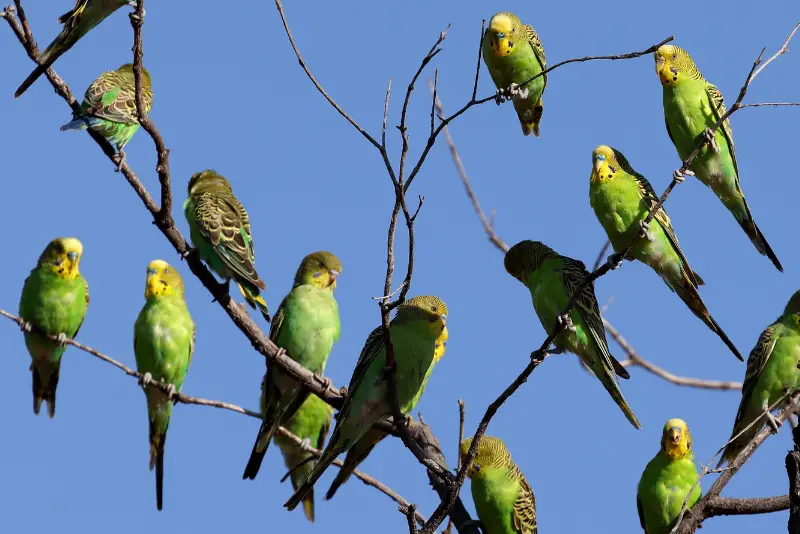
Budgies are thriving in Florida!
These birds are originally native to Australia and New Guinea, where they were named budgerigars only after non-natives had trouble pronouncing the original name, “gidjirrigaar”, which is a Gamilaraay word.
Although these birds have been given this distinctive (albeit erroneous) name, they also go by the more simple name Common Parakeet, or Shell Parakeet.
Since the 1960s, budgies have been reported in 31 of Florida’s 67 counties. Budgerigars can be either green, yellow, or light blue, combined with a gray striped back.
They eat insects, spiders, worms, and other invertebrates, and they also love to play with toys!
Red-masked Parakeet
Scientific name: Psittacara erythrogenys

These little parrots are mostly green, except for a bright red mask, which sometimes extends to the entire head.
In Florida, this bird is most often found in and around Miami parks with exotic plants, where it often occurs in mixed flocks with Mitred Parakeets that even roost together.
The population of these birds is estimated to be around 200 individuals in the Miami area.
Blue-crowned Parakeet
Scientific name: Thectocercus acuticaudatus
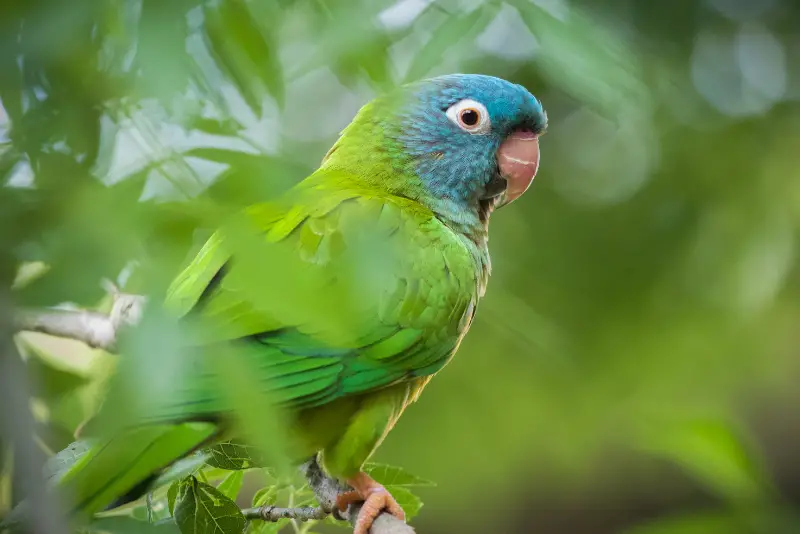
The Blue-crowned Parakeet is almost entirely green, except for a bluish forehead, and a thick white eyering.
In their original range, Blue-crowned Parakeets favor lowland woodland habitats in South America.
These birds have established a breeding population estimated to include more than a hundred individuals in the Upper Florida Keys, Fort Lauderdale, and St. Petersburg. They also occur in California and Hawaii.
White-Winged Parakeet
Scientific name: Brotogeris versicolurus
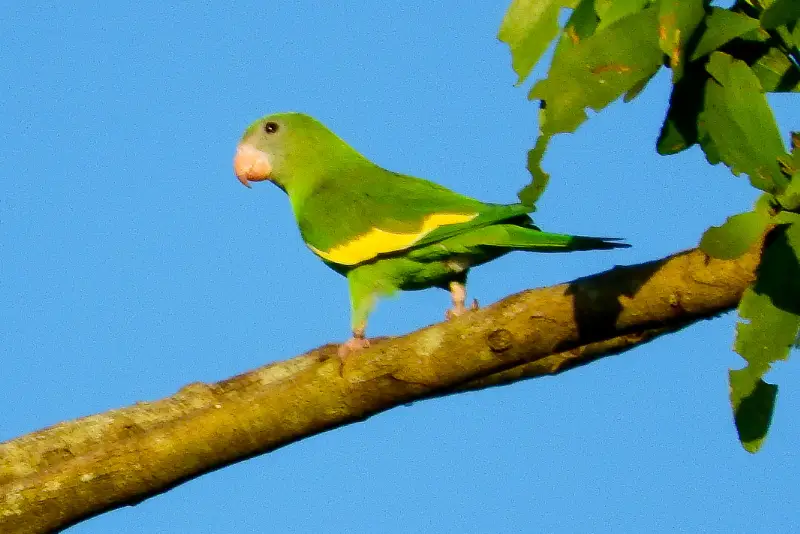
Large numbers of the White-winged Parakeet escaped captivity in the 60s and 70s, which has led to large numbers being found in Miami and other areas of southern Florida.
These birds have a white forehead, back, wings, and a light gray head and neck.
They usually live in pairs or small groups and feed on fruits, seeds, and nuts. They make loud calls during the day and night.
These birds have colonized multiple areas in both Florida and California, as well as several other countries in Central and South America that are not part of its original native range.
Mitred Parakeet
Scientific name: Psittacara mitratus
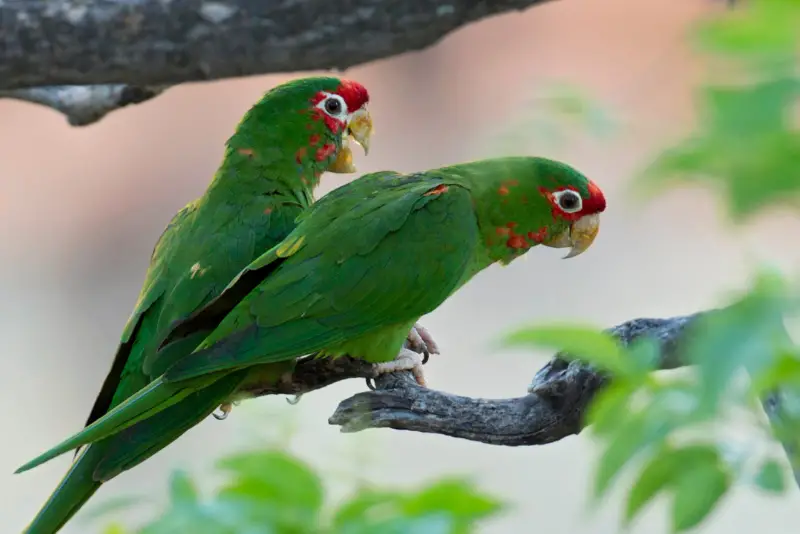
The Mitred Parakeet is another species of parrot that’s originally native to tropical regions of Africa, but can now be found in Florida as well.
These birds have a short, rounded tail and a long, pointed bill. They are mostly green with a reddish crown and have a pale stripe along their throats.
Mitred Parakeet populations have increased dramatically since the 1970s when they escaped into the wild from zoos across the United States.
These birds eat fruits, seeds, and insects. They build nests in trees and shrubs.
White-eyed Parakeet
Scientific name: Psittacara leucophthalmus
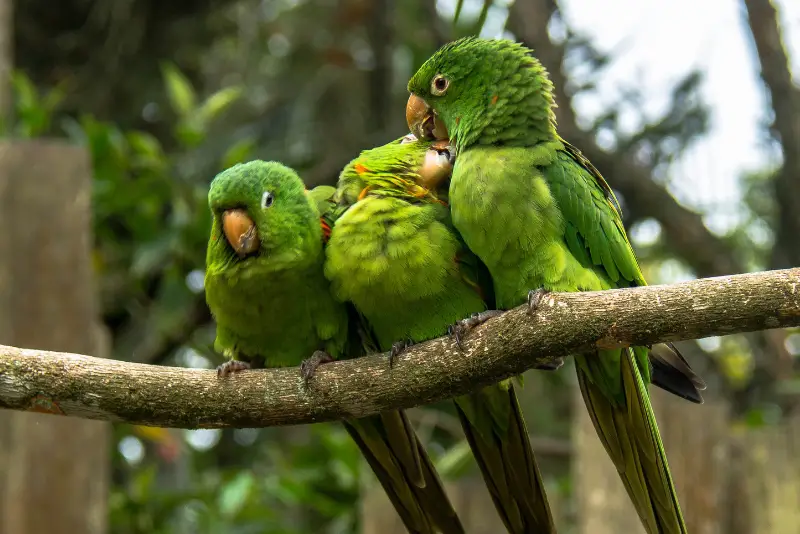
White-eyed Parakeets look similar to Red-masked Parakeets, but have much less red coloration on their head, which basically consists of a few red streaks.
These birds get their name from their white eye ring, although this is a feature they share with several other parakeet species.
Similar to most other members of the psittacidae, these birds nest in cavities and holes in buildings.
They have been introduced in about a dozen counties in south Florida, and are most commonly found in the Miami area.
Green Parakeet
Scientific name: Psittacara holochlorus
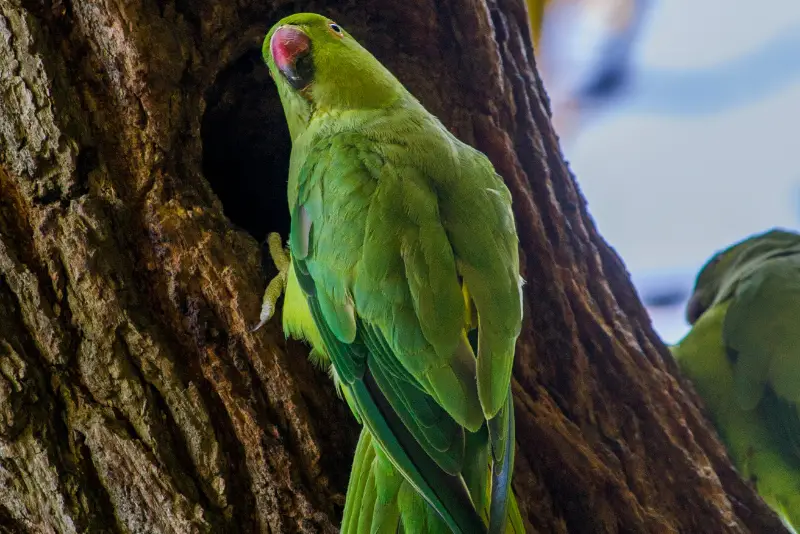
As its name suggests, this parakeet is entirely green, except for a thin black line along its neck, and a bright orange beak.
In Florida, these birds have a breeding population in Miami and Fort Lauderdale, although their population size is currently not certain.
It favors swamp forests and woodlands in the wild, but in suburban areas also occurs in royal palm groves.
Crimson-fronted Parakeet
Scientific name: Psittacara finschi

This small parrot species can be confused with Red-lored Parrots, but is much smaller than the latter.
Another great feature for identifying this species is the thick white eyering, as is the red area on the front edge of their wings. It is only found in the Miami Springs area.
Scarlet-fronted Parakeet
Scientific name: Psittacara wagleri

While this species looks similar to the Crimson-fronted Parakeet, its red forehead extends beyond the eye, and it doesn’t have a prominent white eyering.
It is also found in the Miami Springs area, where it is often observed in mixed flocks with other species.
Yellow-chevroned Parakeet
Scientific name: Brotogeris chiriri

The Yellow-chevroned Parakeet looks very similar to the White-winged Parakeet, but lacks the white wing patch of the latter.
These birds have adapted very well to urban environments in Florida, where they feed on plant nectar, and are regular visitors at bird feeders.
The numbers of this bird are increasing, and the population is estimated to be more than 400 individuals in Florida, most of which are found in Miami and Fort Lauderdale.
Red-Crowned Parrot
Scientific name: Amazona viridigenalis
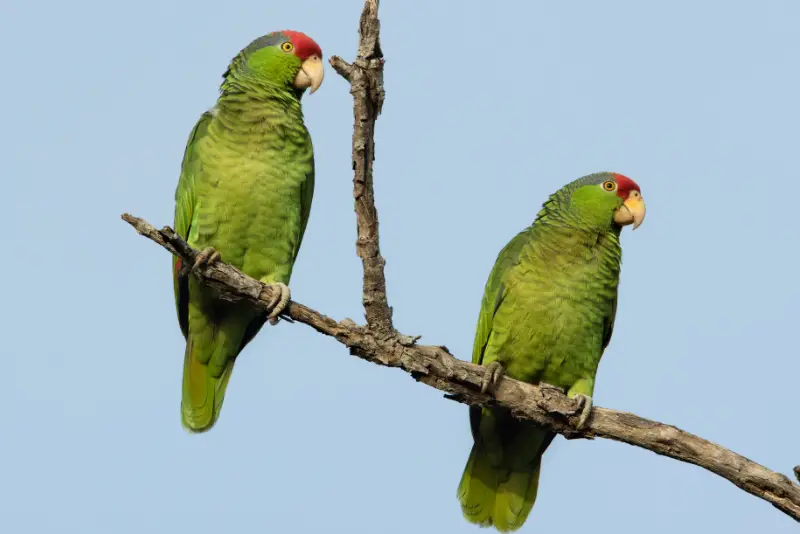
This bird is endemic to the rainforests of Southeast Asia; however, they’re now also found in the Sunshine State, Hawaii, and Puerto Rico.
Red-crowned parakeets have red crests on their heads and a yellow belly. They have a long, curved beak, and a yellow throat.
These birds are omnivores, eating fruit, seeds, leaves, nectar, and insects. They prefer to live in dense vegetation and often perch on branches while hunting for food.
Orange-Winged Amazon
Scientific name: Amazona amazonica
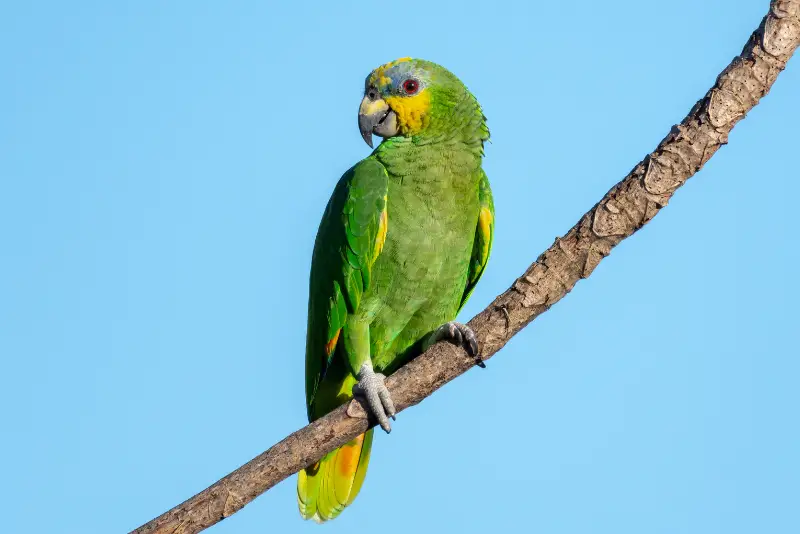
Amazons are large parrots that are native to the tropical forests of Central and South America, and now also Florida.
Orange-winged Amazons have a green body, a blue crest, and an orange beak. Their diet consists of fruits, seeds, and flowers.
These birds are omnivorous, eating fruits, seeds, insects, and worms. They nest in tree holes and use sticks to construct their nests, and will sometimes also use abandoned birdhouses.
The Orange-winged Amazon is one of the most common parrots in urban areas.
Red-lored Parrot
Scientific name: Amazona autumnalis

This parrot species has a characteristic red area between its eyes, which explains its name. It is otherwise largely green, except for a blue gray area on top of its head.
The Red-lored Parrot has established populations in several southern states. It has a small breeding population in southern Florida, but is not as common as other species on this list.
Yellow-headed Parrot
Scientific name: Amazona oratrix
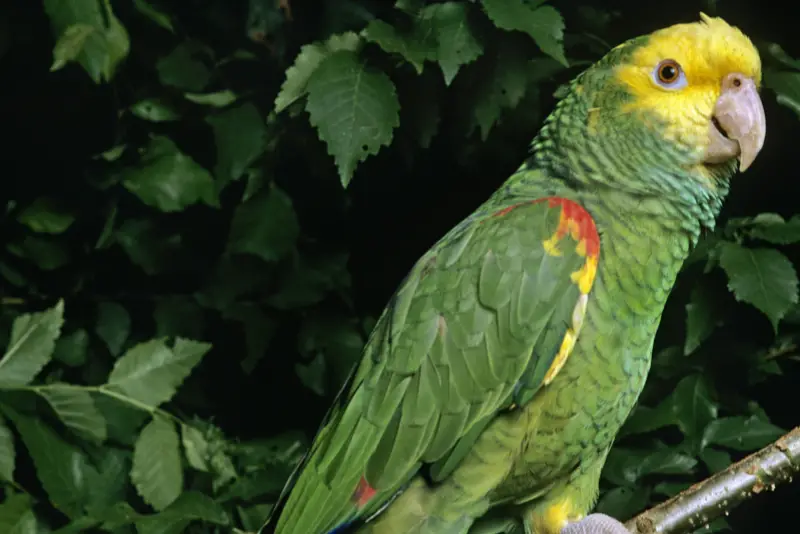
The Yellow-headed Parrot is easily recognizable by its bright yellow head and red patches on its shoulders, which contrast with its green body.
This is an endangered parrot species in its native habitat in South and Central America, and unfortunately the numbers in Florida have also been declining.
Blue-and-yellow Macaw
Scientific name: Ara ararauna
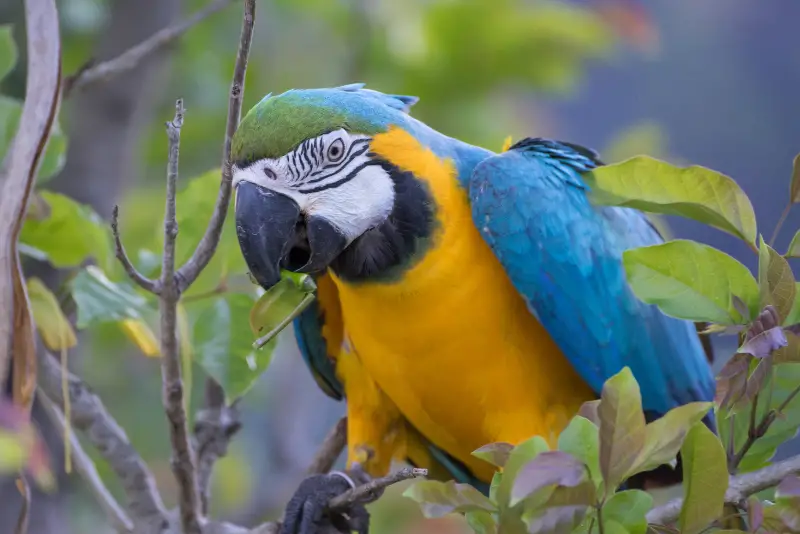
This large and colorful parrot can be seen in several parks of Miami, including the campus of the University of Miami.
These brightly colored birds are easy to recognize, due to their combination of bright yellow underparts with blue upperparts.
Chestnut-fronted Macaw
Scientific name: Ara severus
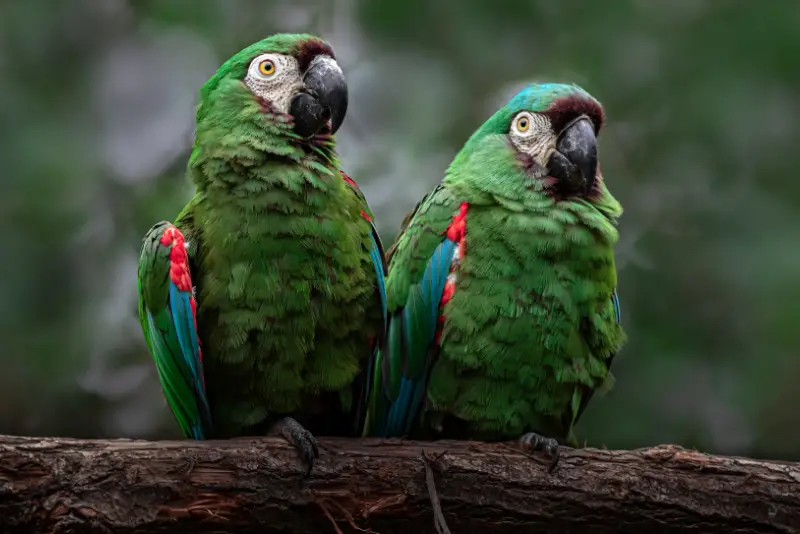
This small macaw species is largely green, except for its gray face, and red forewings. It has breeding populations in South Miami and Coral Gables.
Its gray face has a chestnut-colored path above the large black bill, which explains its name. But this feature is hard to spot from a distance.
How many wild parrots are in Florida?
The combined population of all parrot species living in Florida is estimated to be somewhere between 100,000 and 150,000 individuals.
Monk Parakeets (the most common parakeets in Florida), are estimated to have a population of over 100,000 individuals.
And even though there are more than 15 other species of parrots that breed in Florida, most of these are present in much smaller numbers, with populations numbering in the hundreds.
The success of Monk Parakeets in Florida is probably linked to their breeding behavior.
In contrast to other species of parrots (which only nest in cavities), Monk Parakeets make large stick nests, and often collaborate with other pairs.
These social birds build their nests not only in trees, but also on power poles. As a result of this, they are able to breed almost anywhere in the Sunshine State.
How did parrots get to Florida?
Most of the parrots living in Florida are escaped birds from the pet trade, while others have been introduced by humans on purpose.
None of the parrots that currently breed in Florida are native to Florida.
The success of these introduced birds is probably due to the mild climate in Florida, combined with access to a wide variety of exotic vegetation in urban habitats including both tropical and subtropical plants.
The only parrot species that was actually native to Florida is the Carolina Parakeet, but this bird species went extinct more than a hundred years ago.
Final Thoughts
Florida is home to some of the most impressive wildlife on the planet. The state has a wide range of habitats, from swamps and marshes in the north to tropical forests and beaches along the Gulf Coast.
Florida is also home to many exotic birds that are not found anywhere else in North America, and parrots, in particular, seem to be found more frequently in the sunshine state.
Parrots are amazing creatures. Although we may not always understand what they’re saying, we do know that birds provide us with many benefits.
From pollinating plants to helping out by keeping pests away, birds play a very important role in our environment, and in the Sunshine State, you can find plenty of beautiful parrots and parakeets in all different kinds of habitats.

